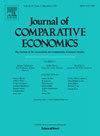Canal and trade: Transportation infrastructure and market integration in China, 1780–1911
IF 3.1
2区 经济学
Q1 ECONOMICS
引用次数: 0
Abstract
This paper explores the role of transportation infrastructure in pre-modern economic development by investigating the historical canal's closure. We quantify the effects of closing China's Grand Canal in 1826 by disastrous flooding, the world's largest and oldest manmade waterway, on market integration. We use archived grain prices from 1780 to 1911 and find that the canal's closure led to a 30% decline in market integration; this impact lasted for more than 70 years. Our results are robust while addressing the alternative measures of market integration, potential spillovers from treated groups to control groups, influences of forced openness, and potential measurement errors and standard error adjustments. We find evidence consistent with increasing transportation costs and information friction as the main potential mechanisms. Our findings highlight the importance of transportation infrastructure in reducing arbitrage costs and provide new evidence which is important to explain the process of the Great Divergence between China and Europe.
运河与贸易:中国的运输基础设施与市场整合,1780-1911
本文通过考察历史上运河的关闭,探讨了交通基础设施在前现代经济发展中的作用。我们量化了1826年因灾难性洪水而关闭中国大运河(世界上最大、最古老的人造水道)对市场整合的影响。我们使用了1780年至1911年的存档谷物价格,发现运河的关闭导致市场一体化下降了30%;这种影响持续了70多年。我们的研究结果是稳健的,同时也解决了市场整合的替代措施,从实验组到对照组的潜在溢出效应,强制开放的影响,以及潜在的测量误差和标准误差调整。我们发现的证据表明,运输成本的增加和信息摩擦是主要的潜在机制。我们的研究结果强调了交通基础设施在降低套利成本方面的重要性,并为解释中欧大分化的过程提供了重要的新证据。
本文章由计算机程序翻译,如有差异,请以英文原文为准。
求助全文
约1分钟内获得全文
求助全文
来源期刊

Journal of Comparative Economics
ECONOMICS-
CiteScore
4.40
自引率
0.00%
发文量
66
审稿时长
45 days
期刊介绍:
The mission of the Journal of Comparative Economics is to lead the new orientations of research in comparative economics. Before 1989, the core of comparative economics was the comparison of economic systems with in particular the economic analysis of socialism in its different forms. In the last fifteen years, the main focus of interest of comparative economists has been the transition from socialism to capitalism.
 求助内容:
求助内容: 应助结果提醒方式:
应助结果提醒方式:


